Introduction to B2B SaaS Email Marketing
In the rapidly evolving world of business-to-business (B2B) software as a service (SaaS), email marketing stands as a vital component in shaping the growth and retention strategies of companies. Despite the surge in new digital marketing channels, email marketing retains a top spot due to its remarkable return on investment (ROI) and direct reach to customers.
For B2B SaaS companies, the stakes are particularly high. The unique challenges of marketing a service that’s both technical and often subscription-based means that every email sent must be strategically thought out to engage, convert, and retain. Whether you’re addressing startups or established enterprises, the flexibility and cost-effectiveness of email campaigns make them indispensable.
As we delve into the detailed email marketing strategies and tips in the subsequent sections, we will explore how to maximize these benefits through targeted email marketing approaches, crafting compelling content, and leveraging advanced technological tools.

Crafting Your Email Marketing Strategy
Developing an effective email marketing strategy is essential for B2B SaaS companies aiming to thrive in a competitive landscape. At the core, it involves setting clear objectives, identifying your target audience, and tailoring strategies to meet specific business needs.
Setting Clear Objectives
Start by defining what you want to achieve with your email campaigns. Objectives can range from increasing product adoption, boosting customer retention, driving renewals, or promoting new features. Clear goals will not only guide your email content and design but also help in measuring success.
Identifying Target Audience
Understanding who your emails will address is crucial. B2B SaaS products often cater to specific industries, job roles, or business sizes. Create detailed buyer personas that include demographic information, business pain points, and technological aptitude. This insight ensures that your emails speak directly to the needs and interests of your recipients.
Strategy Customization
Each SaaS company is unique, and so should be its email marketing strategy. Consider the following elements for customization:
Personalization: Go beyond just inserting the recipient’s name. Tailor content according to the user’s role, industry, and even the stage in the customer journey.
Content-Type: Decide on a mix of educational, promotional, and transactional emails. While educational content builds thought leadership, promotional emails drive action.
Frequency and Timing: Determine how often to send emails based on customer engagement levels and preferences. Too many emails can lead to unsubscribes, too few might lead to missed opportunities.
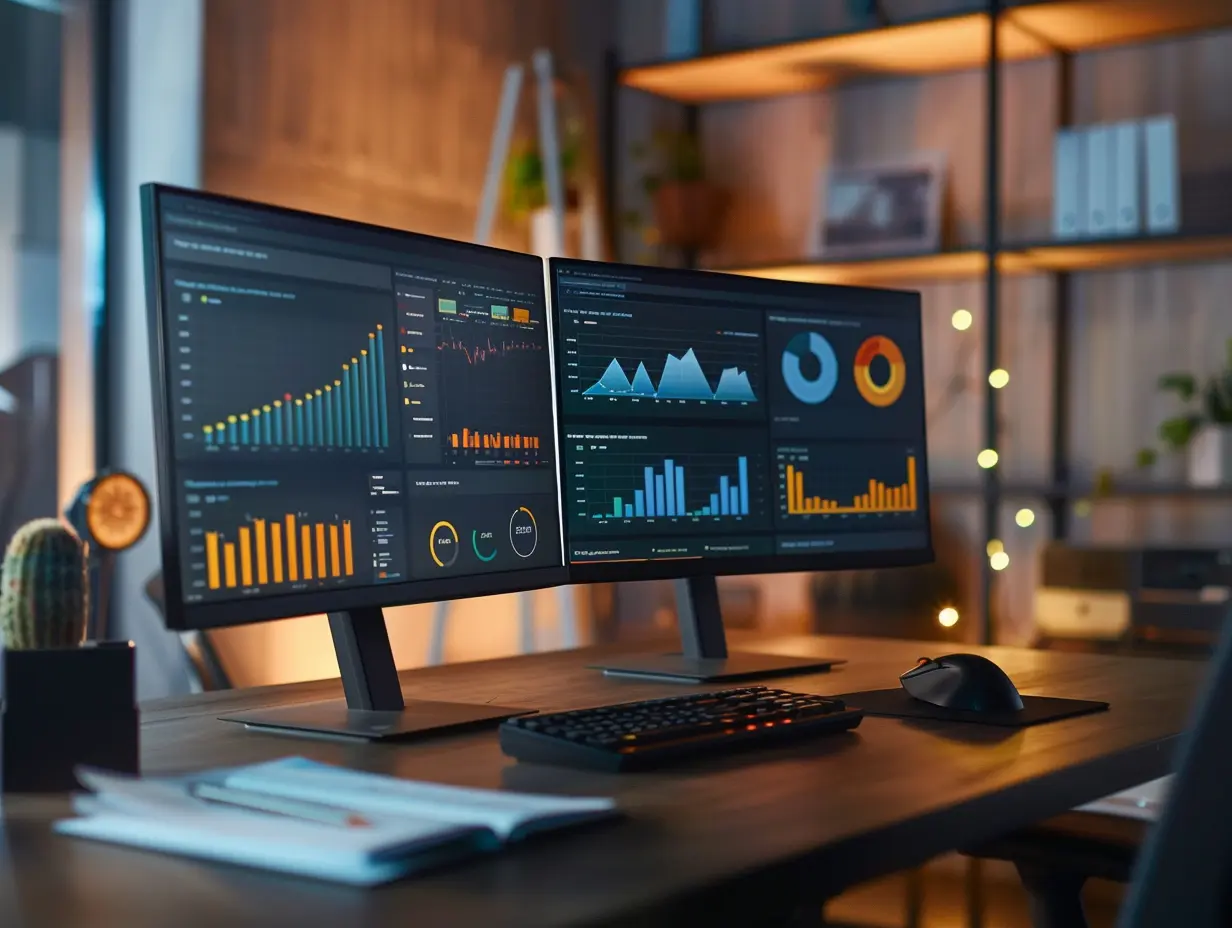
Incorporating these elements into your email marketing strategy will not only improve the relevance and effectiveness of your campaigns but also enhance the overall experience for your subscribers.
Segmentation: Key to Personalization
Understanding Segmentation
Segmentation in email marketing refers to dividing your email list into smaller, more targeted groups based on specific criteria such as industry, job role, behavior, or purchase history. This strategy allows B2B SaaS companies to send more relevant and personalized emails to each segment, significantly increasing the effectiveness of their marketing efforts. Proper segmentation ensures that the right message reaches the right people at the right time, leading to higher engagement rates and better customer satisfaction.
Tools for Effective Segmentation
Several tools and software solutions can help you manage and analyze your email lists for effective segmentation. Here are some tools that are highly regarded in the B2B SaaS community:
- CRM Systems: Tools like Salesforce and HubSpot provide robust segmentation capabilities, allowing you to create dynamic lists based on user behaviors and interactions with your services.
- Email Marketing Platforms: Solutions such as Mailchimp and Constant Contact offer easy-to-use features to segment lists based on subscriber data and campaign interactions.
- Data Analytics Tools: Utilizing tools like Google Analytics can help you track how different segments of your audience interact with your website and emails, giving you deeper insights for further refinement of your segments.
Using these tools, companies can automate the segmentation process, ensuring that data remains up-to-date and that messages are tailored to the evolving needs of their audience.
Case Studies
To illustrate the power of segmentation, consider a SaaS company that implemented segmented email marketing to increase engagement:
- TechStartup Inc.: This B2B SaaS company segmented its email list based on user activity levels and industry types. For inactive users, they sent re-engagement emails with special offers, while active users received updates on new features and case studies. As a result, they saw a 50% increase in engagement levels and a 30% uplift in renewal rates.
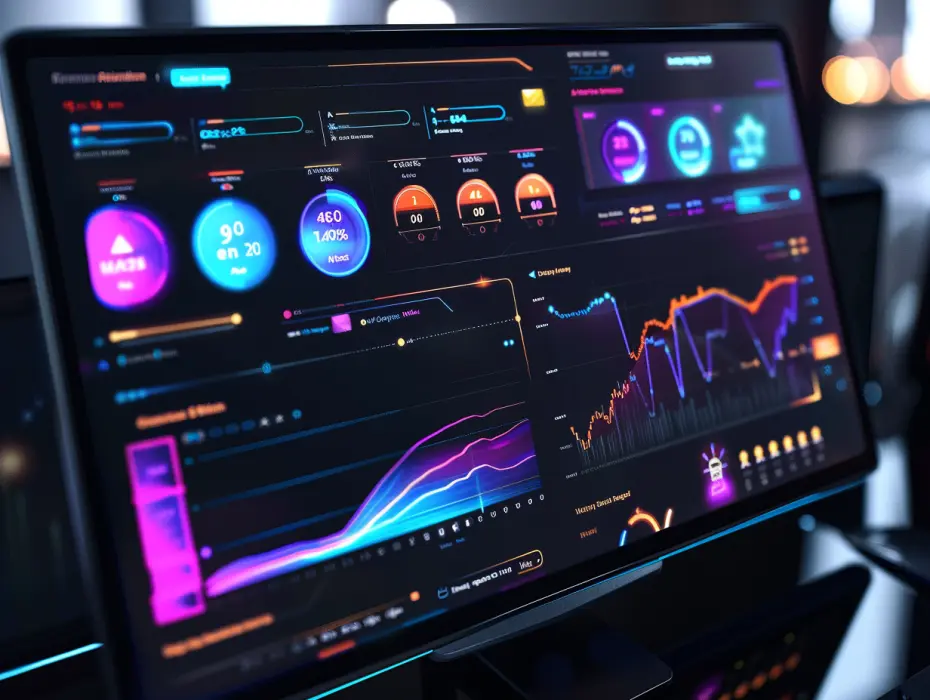
Implementing Advanced Segmentation
Advanced segmentation can leverage machine learning algorithms to predict future behaviors based on past interactions, allowing companies to proactively tailor their communications. For example, predicting which users are likely to churn can help companies send retention-focused communications just when the customer needs them the most.
Embracing a strategic approach to segmentation in your email marketing can significantly enhance the effectiveness of your communications, driving better results in customer engagement and retention.
Writing Compelling Subject Lines
Crafting compelling subject lines is crucial in email marketing, especially for B2B SaaS companies where the decision to open an email can significantly impact customer engagement and conversion rates. The subject line is your first, and often only, chance to make a good impression. Thus, it should be carefully designed to grab attention and persuade the recipient to read further.
Tips for Engaging Subject Lines
To enhance the effectiveness of your email marketing campaign, consider the following tips when crafting subject lines:
- Clarity and Relevance: Ensure your subject lines clearly reflect the content of your email. Misleading subject lines can lead to high open rates initially but will ultimately damage trust and engagement.
- Brevity is Key: Keep it short and sweet. A concise subject line is often more effective, especially since many users view emails on mobile devices.
- Personalization: Include the recipient’s name, company, or industry, when appropriate, to increase relevance and engagement.
- Pique Curiosity: Use intriguing phrases that invoke the recipient’s curiosity without being clickbait. Example: “Unlock the Secret to Triple Your SaaS Growth.”
- Use of Numbers and Lists: Numbers imply a promise of value and are eye-catching. Example: “5 Proven Strategies to Enhance Your Email Campaigns.”
- Urgency and Scarcity: Phrases like “Limited offer” or “Last chance” can create a sense of urgency, encouraging recipients to act immediately.
Examples of Successful Lines
Here are a few examples of successful email subject lines used by leading B2D SaaS companies:
- “[First Name], See What’s New in [Product’s Latest Version]!” — This personalizes the email and indicates fresh, relevant content.
- “Last Day to See What Everyone’s Talking About!” — Creates urgency and taps into the fear of missing out (FOMO).
- “How [Company Name] Achieved 40% More Leads with These Simple Steps” — Showcases a benefit with the promise of how it was achieved, making it highly compelling.
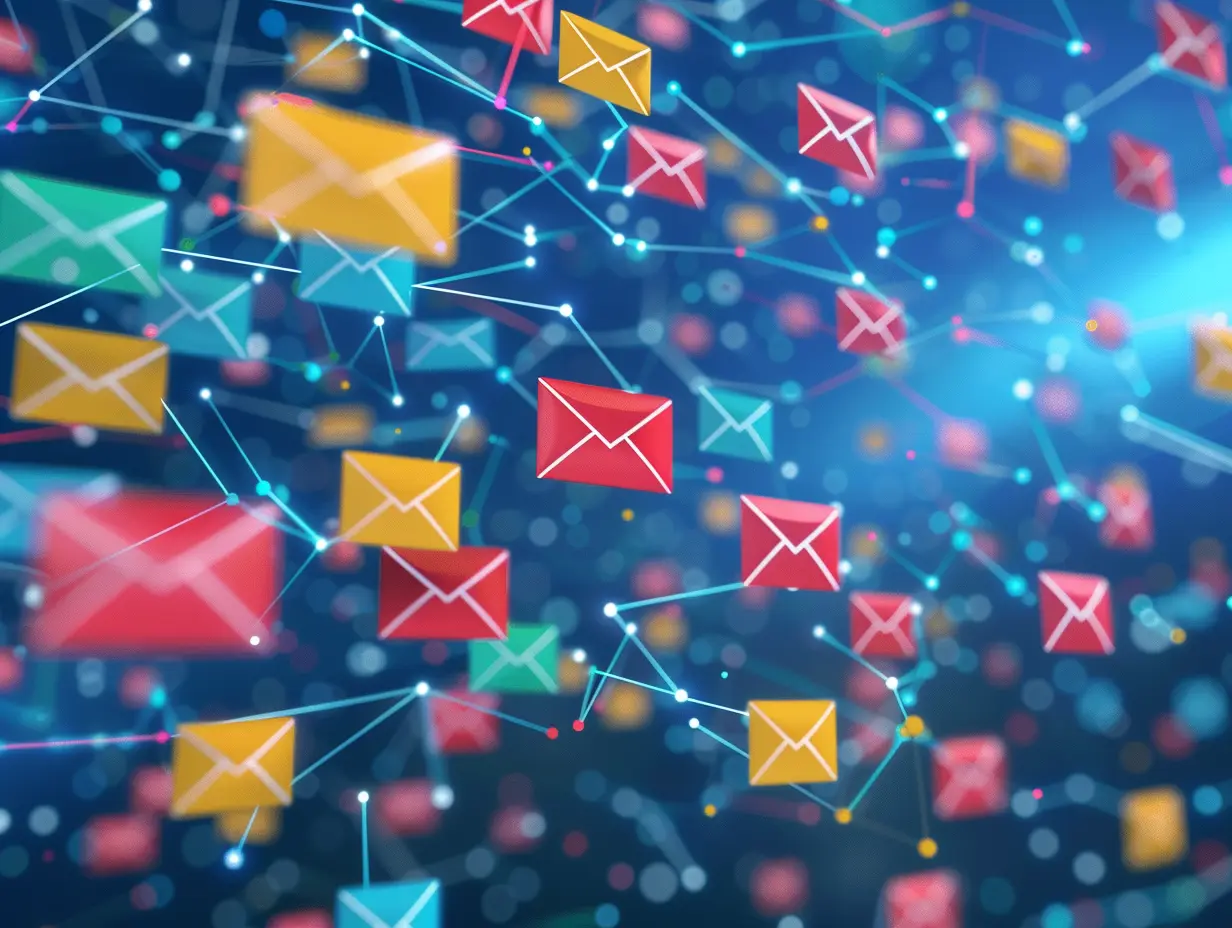
Incorporating these strategic elements into your email subject lines can significantly enhance the open rates and overall effectiveness of your email marketing campaigns. Ensure each subject line is crafted with the same care and strategic thought as the email content itself, focusing on what will drive your audience to engage with your message. As B2B SaaS markets continue to evolve, leveraging these tips will help maintain a compelling and clickable email marketing strategy.
Content That Converts: Crafting Emails for Maximum Impact
Email marketing for B2B SaaS companies isn’t just about getting your message into someone’s inbox; it’s about crafting content that motivates action and drives conversions. Whether your goal is to educate, sell, or nurture relationships, the content of your emails plays a pivotal role in achieving your business objectives.
Using Strong Calls-to-Action (CTAs)
CTAs are one of the most critical elements of your email content. They guide your recipients on what steps to take next, whether it’s subscribing to a webinar, downloading a whitepaper, or scheduling a demo. Here are some tips for creating effective CTAs:
- Visibility: Ensure your CTA is visually prominent and easy to find.
- Clarity: Each CTA should be clear and concise. Tell your recipients exactly what you want them to do.
- Urgency: Use language that compels action, such as “Register now” or “Offer ends soon.”
Content Personalization Tips
Personalization goes beyond addressing the recipient by name. It involves tailoring the content of your emails based on the recipient’s behavior, preferences, and stage in the customer journey. Here’s how you can personalize effectively:
- Segmentation: Utilize segmentation data to customize email content. For instance, send product tips to users who have just completed onboarding, while long-time users might appreciate advanced usage hacks.
- Behavioral Triggers: Send content based on user actions. For example, if a user downloads a whitepaper on a particular topic, follow-up emails could offer related case studies or invite them to a relevant webinar.
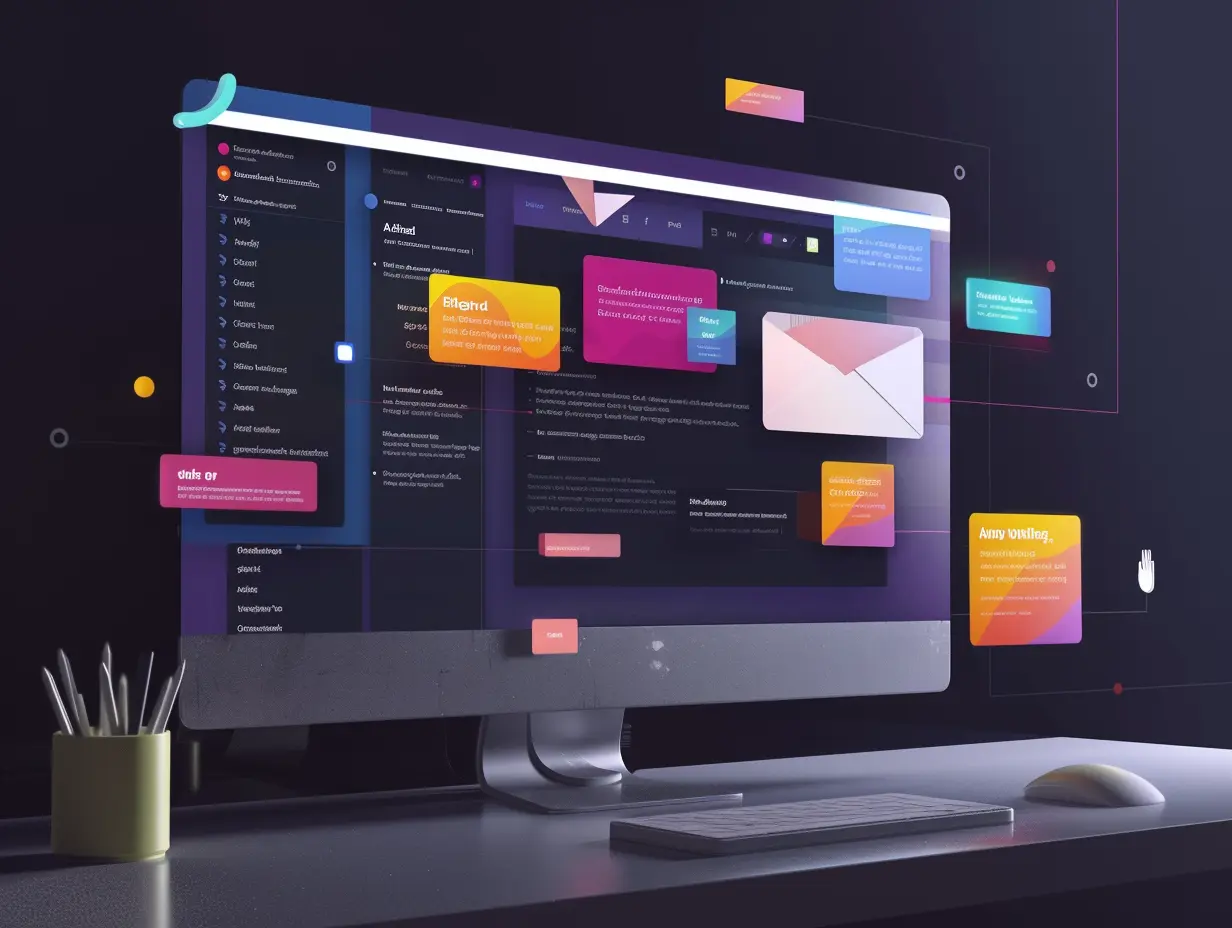
In conclusion, the success of your email marketing strategy hinges not just on how many people open your emails, but on how effectively the content within motivates them to act. By balancing informative and promotional material, crafting compelling CTAs, and personalizing content based on detailed audience insights, B2B SaaS companies can transform their email outreach into a powerful tool for conversion and customer retention. Embrace these practices to ensure your emails not only capture attention but also drive meaningful business outcomes.
Leveraging Automation Tools for Efficient Email Marketing
In the competitive landscape of B2B SaaS, leveraging automation tools for email marketing can significantly streamline workflows, enhance targeting, and improve overall campaign effectiveness. Automation not only saves valuable time but also ensures consistency and personalization at scale, key factors that can drive customer engagement and conversions.
Benefits of Email Automation
Adopting email automation offers several strategic advantages:
- Efficiency: Automate repetitive tasks such as sending welcome emails, follow-up reminders, and routine communications. This frees up your marketing team to focus on more complex strategies and creative tasks.
- Consistency: Automation helps maintain a consistent communication schedule, crucial for keeping your brand at the top of your customers’ minds without overwhelming them.
- Scalability: As your business grows, automation scales your email campaigns without requiring additional resources, ensuring your marketing efforts continue uninterrupted regardless of customer base size.
- Improved Targeting: Automated tools can dynamically segment and target emails based on user behaviors, significantly improving the relevance and effectiveness of campaigns.
Integration with Other Platforms
To maximize impact, email marketing automation should be integrated with other business systems:
- CRM Integration: Connecting your email automation platform with CRM systems ensures that all customer interactions are synced. This integration provides a comprehensive view of customer behaviors, preferences, and engagement.
- Analytics Tools: Combine email automation with analytics tools to measure the success of campaigns in real-time, allowing for quick adjustments and optimization.
- Social Media Platforms: Integrating with social media allows for a cohesive marketing strategy that leverages user data from multiple channels for more targeted and engaging content.

Incorporating automation tools into your email marketing strategy can transform your approach from manually driven to a sophisticated, data-driven operation. This transition not only enhances the efficiency of your campaigns but also provides deeper insights into customer preferences and behavior, paving the way for higher engagement and conversion rates. As B2B SaaS companies continue to evolve, staying ahead with advanced automation tools will be crucial in maintaining a competitive edge in email marketing.
Optimizing Email Designs for Maximum Conversion
In the domain of B2B SaaS email marketing, design plays a crucial role in ensuring that your messages are not only read but also acted upon. The aesthetic appeal and functional layout of your emails can substantially influence user engagement and conversion rates. This section delves into the principles of effective email design and how to optimize them for conversion.
Design Principles for Email Marketing
A well-designed email can enhance readability, capture attention, and guide the user towards taking action. Here are a few principles to consider:
- Simplicity and Clarity: Keep the design simple and the content clear. Overly complicated designs can distract from the message. Use a clean layout with ample white space.
- Visual Hierarchy: Structure your content in a way that leads the reader’s eye through the email. Use headings, subheadings, and a logical flow to ensure key messages stand out.
- Consistency: Keep your brand’s look and feel consistent across all emails. This includes fonts, colors, and tone of voice, fostering familiarity and trust.
- Responsive Design: Ensure your emails look good on any device. With the increasing use of smartphones to read emails, responsive design is no longer optional.
Mobile-friendly Designs
Given the prevalence of mobile email usage, it’s vital that your emails are optimized for mobile devices:
- Stackable Content: Design elements that stack vertically on smaller screens make emails easier to navigate.
- Touch-friendly Buttons: Ensure call-to-action (CTA) buttons are large enough to be easily tapped on a mobile device.
- Compressed Images: Use optimized images that load quickly to enhance the mobile user experience without sacrificing quality.
A/B Testing Designs
To truly optimize your email designs for conversion, A/B testing is essential. This involves sending two variations of your email to a small segment of your audience to see which performs better, and then using the winning version for the rest of your list. Focus on testing these elements:
- Subject Lines: Test different phrases or formats to see what increases open rates.
- Call-to-Actions: Experiment with different colors, placements, and wording to determine which CTA garners more clicks.
- Layouts and Images: Try different configurations and image choices to see which leads to better engagement and conversions.

By meticulously applying these design principles and continually testing different elements, B2B SaaS companies can significantly enhance the effectiveness of their email marketing campaigns.
Advanced Techniques: AI and Machine Learning in Email Marketing
The integration of Artificial Intelligence (AI) and Machine Learning (ML) in email marketing is reshaping how B2B SaaS companies engage with their audiences. These technologies allow for more intelligent segmentation, predictive analytics, and personalized content, significantly enhancing the effectiveness of email campaigns.
Predictive Analytics
Predictive analytics use AI to analyze historical data and predict future behaviors. In the context of email marketing, this means understanding which types of emails certain segments of your audience are likely to engage with, or even predicting the best times to send emails to increase open rates. Here’s how B2B SaaS companies can leverage predictive analytics:
- Optimal Timing: AI tools can analyze past engagement data to determine the best times to send emails, maximizing the likelihood of opens and clicks.
- Content Relevance: Predictive models can suggest which topics or offers a particular customer segment might be interested in, allowing for the customization of email content to match user preferences and increase relevance.
Behavioral Email Triggers
Behavioral email triggers are automated emails that are sent based on a user’s interactions with a product or website. Machine learning algorithms can refine these triggers, ensuring that the emails are sent at the right moment in a user’s journey to have the maximum impact. For instance:
- Onboarding Emails: Triggered when a user signs up or starts using a feature, these emails guide them through the product, leveraging AI to customize the journey based on the user’s actions.
- Re-engagement Emails: Sent to users who haven’t interacted with the product for a certain period, these emails can be optimized to carry messages most likely to bring users back into active engagement.
AI in Personalization
AI takes personalization beyond basic segmentation and generic messages, allowing for a level of customization previously unattainable. Here are a few applications:
- Dynamic Content: AI can dynamically alter email content, images, and offers based on real-time user behavior and preferences, creating highly personalized and engaging experiences.
- Predictive Lead Scoring: AI can analyze how users interact with your emails and score them based on their likelihood to convert, allowing marketers to focus efforts on the most promising leads.

These advanced techniques represent just the tip of the iceberg in the potential application of AI and Machine Learning in email marketing for B2B SaaS companies. By harnessing these technologies, businesses can not only improve the efficiency of their marketing campaigns but also offer more tailored, relevant, and timely interactions, thus enhancing the overall customer experience and driving better business results. As technology evolves, staying updated and integrating these tools into email marketing strategies will be essential for maintaining a competitive edge and achieving greater marketing success.
Analyzing Email Marketing Metrics: A Key Driver for Strategy Enhancement
In the fast-paced world of B2B SaaS, understanding your email marketing metrics is crucial for assessing the effectiveness of your campaigns and making informed strategy adjustments. This section delves into the critical performance indicators you should monitor and how interpreting these metrics can significantly enhance your email marketing efforts.
Key Performance Indicators (KPIs)
To effectively measure the success of your email marketing campaigns, focus on these essential KPIs:
- Open Rate: Indicates the percentage of recipients who opened your email. A low open rate could signal issues with your subject lines or send times.
- Click-through Rate (CTR): Shows the percentage of recipients who clicked on a link within the email. This metric helps gauge the engagement level and appeal of your content.
- Conversion Rate: Measures the percentage of recipients who completed a desired action, such as filling out a form or making a purchase, after clicking a link in the email.
- Bounce Rate: The rate at which your emails are not delivered, either due to server issues or incorrect email addresses. A high bounce rate could affect your sender reputation.
- Unsubscribe Rate: Tracks how many people opted out of your email list after receiving an email, an essential metric for assessing content relevance and audience satisfaction.
Interpreting Data for Strategy Refinement
Collecting data is just the first step; the critical component is interpreting these metrics to refine your strategy:
- Segmentation Adjustment: Analyze which segments respond best and tailor your campaigns to increase relevance for different audience groups.
- Content Optimization: Use engagement metrics like CTR and conversion rates to understand what content resonates with your audience, helping you to focus on topics and formats that drive results.
- Send Time Optimization: Experiment with different sending times and days to identify when your audience is most likely to engage with your emails.
Tools for Analytics
Leveraging the right tools is essential for efficiently tracking and analyzing email campaign metrics. Here are a few recommended tools:
- Google Analytics: Integrates with many email marketing platforms to track website actions following email clicks, providing a deeper understanding of how email campaigns drive web engagement.
- Tableau: Offers advanced data visualization tools that can integrate data from various sources, including email metrics, to provide comprehensive insights.
- Adobe Analytics: Known for its real-time analytics capabilities, allowing marketers to quickly adjust campaigns based on user interactions and behaviors.
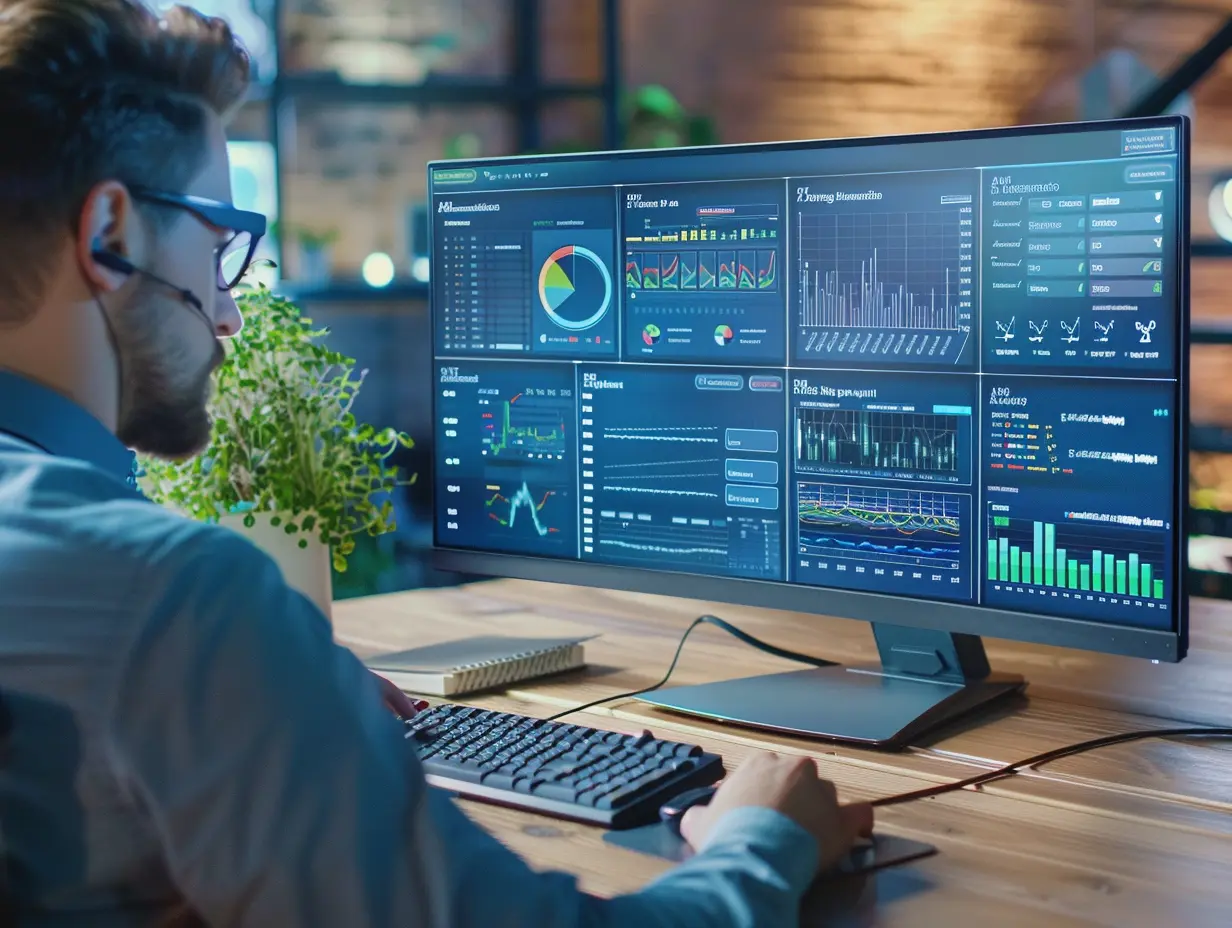
By consistently analyzing these metrics, you can gain valuable insights into what works and what doesn’t in your email marketing campaigns. This data-driven approach allows for continuous improvement, ensuring that your email marketing strategy not only meets but exceeds the expectations of your B2B SaaS audience. With each iteration, you can enhance your approach, better engage your customers, and achieve a higher ROI, thereby securing a formidable competitive advantage in your market.
Legal Compliance and Best Practices in B2B SaaS Email Marketing
Adhering to legal standards and implementing best practices are crucial elements in executing a successful B2B SaaS email marketing strategy. This section explores key regulations such as GDPR and CAN-SPAM, alongside practical tips for maintaining subscriber trust and compliance.
Understanding GDPR and CAN-SPAM
The General Data Protection Regulation (GDPR) and the Controlling the Assault of Non-Solicited Pornography And Marketing (CAN-SPAM) Act set the foundation for email marketing compliance:
- GDPR: Primarily affects companies dealing with EU residents, emphasizing consent, data rights, and privacy. Key requirements include obtaining explicit permission to send emails, providing an easy way for subscribers to opt-out, and maintaining transparent data processing and storage practices.
- CAN-SPAM: Applicable to all commercial messages sent by U.S. companies, it mandates clear identification of the sender, straightforward subject lines, a physical address display, and a conspicuous way for recipients to unsubscribe from future emails.
Best Practices for Compliance
Maintaining compliance not only ensures legal safety but also builds subscriber confidence. Implement these best practices to remain compliant while fostering trust:
- Consent and Transparency: Always secure explicit consent before adding new contacts to your email list. Be transparent about what subscribers should expect in terms of content and frequency.
- Regular List Cleaning: Periodically review and clean your email lists. Remove inactive users and promptly honor unsubscribe requests to reduce spam complaints and improve engagement.
- Clear Unsubscribe Options: Include a visible and easy-to-use unsubscribe link in every email. Ensuring a straightforward opt-out process respects user preferences and complies with legal standards.
- Data Protection: Implement robust cybersecurity measures to protect subscriber data. Regular audits and compliance checks can help identify and mitigate risks, ensuring the privacy and security of collected data.
Maintaining Subscriber Trust
Trust is a critical component of any marketing strategy, particularly in the information-sensitive environment of B2B SaaS. Here’s how to maintain and build this trust through your email marketing practices:
- Value-Driven Content: Ensure that each email adds value to your subscribers, whether through insightful information, helpful tips, or exclusive offers. High-quality content reduces unsubscribe rates and enhances brand reputation.
- Feedback Mechanisms: Encourage feedback by including surveys or response prompts in your emails. This not only engages subscribers but also provides valuable insights into their preferences and needs, allowing for better targeting and personalization.
- Regular Communication: Keep in touch with your subscribers through regular updates. Consistent, predictable communication can build a strong, trust-based relationship between your brand and its audience.

By prioritizing legal compliance and ethical best practices in your email marketing efforts, B2B SaaS companies can foster lasting relationships with their audience, safeguard their operations against legal repercussions, and enhance their overall brand integrity. These measures not only contribute to a healthier digital marketing ecosystem but also ensure that your company stands out as a trustworthy and respectful business partner in the competitive B2B landscape.
Case Study: Successful B2B SaaS Email Campaigns
Drawing from real-world applications can provide invaluable insights into the practical implementation and effectiveness of strategic email marketing in the B2B SaaS sector. This section showcases specific examples of how different companies have leveraged email marketing to achieve significant business outcomes.
Overview of Successful Campaigns
Several B2B SaaS companies have set benchmarks in email marketing by executing campaigns that not only increased engagement but also drove substantial business growth. These campaigns often combine several elements discussed in previous sections, such as strategic segmentation, compelling content, and advanced personalization techniques.
Case Study 1: Ascend.io
- Objective: Increase customer engagement and promote new product features.
- Strategy: Ascend.io utilized targeted email marketing, sending personalized emails to different segments based on user behavior and previous interactions with the platform.
- Result: The campaign led to a 40% increase in user engagement and a 25% uptick in adoption of new features.
Case Study 2: DataSecure Inc.
- Objective: Boost lead generation through educational content.
- Strategy: This company launched a series of webinars on data security, promoted through highly targeted email sequences that addressed specific pain points of each segment.
- Result: DataSecure Inc. saw a 50% rise in webinar sign-ups, leading to a 20% increase in qualified leads.

Strategies Used
The success of these campaigns can be attributed to a mix of intelligent segmentation, apt utilization of automation tools, and crafting emails that resonate on a personal level with their recipients. Both companies used advanced analytics to continually refine their strategies and achieve better alignment with their audience’s needs.
- Tailored Content: Content was specifically designed to address the interests and challenges of distinct user groups, making each communication relevant and valuable to its recipients.
- Behavioral Triggers: Emails were triggered based on specific user actions, such as downloading a resource or visiting a webinar signup page, which increased the timeliness and relevance of the communications.
Results Achieved
The results underscored the power of a well-executed email marketing strategy in the B2B SaaS environment:
- Improved Customer Retention: Engaging and informative content helped improve customer satisfaction and loyalty.
- Increased Sales: The direct promotion of new features and services drove higher conversion rates and accelerated sales cycles.
- Enhanced Brand Reputation: By providing valuable content, both companies enhanced their stature as thought leaders in their respective industries.
In conclusion, these case studies demonstrate that when email marketing is executed with a clear understanding of the audience, defined goals, and a strategic approach to content and segmentation, it can lead to outstanding outcomes for B2B SaaS companies. These examples serve as a blueprint for other businesses looking to enhance their email marketing efficacy. By adopting similar strategies, companies can see not only improved engagement metrics but also substantial business growth, positioning themselves favourably within competitive markets.
Navigating Future Trends in B2B SaaS Email Marketing
In the ever-evolving landscape of B2B SaaS, staying abreast of emerging trends in email marketing is essential for maintaining a competitive edge. As technology advances, consumer behaviors shift, and new challenges arise, B2B SaaS companies must anticipate and adapt to these changes. This section explores the key trends that are set to shape the future of email marketing in this dynamic industry.
Emerging Technologies
Innovative technologies continue to transform email marketing strategies and tactics. Here are a few that are making waves:
- Artificial Intelligence (AI) and Machine Learning (ML): These technologies will become even more sophisticated, further personalizing email content and timing to optimize user engagement.
- Advanced Analytics: Deeper insights into customer behavior and preferences will drive content strategies, enhancing the personalization and effectiveness of email campaigns.
- Integrated Platforms: Expect a rise in the use of platforms that seamlessly integrate email marketing with other channels like social media, CRM, and content management systems, providing a unified view of the customer journey.
Evolving Customer Expectations
Customers’ expectations are not static; they evolve with market trends and technological advancements. In response, email marketing must adapt:
- Greater Personalization: Beyond basic segmentation, customers will expect highly curated content that resonates with their specific needs and interests.
- Interactive Emails: Enhanced email interactivity, such as embedded videos and interactive polls, will become more prevalent to engage users directly within their inboxes.
- User Privacy and Control: With increasing awareness about data privacy, more transparent and user-controlled email interactions will become crucial.
Adapting to New Regulations
Regulatory changes will continue to shape email marketing practices:
- Stricter Privacy Laws: As global concern over data privacy grows, new regulations may emerge, requiring changes to how businesses collect, store, and utilize email marketing data.
- Security Measures: Enhancing security protocols to protect sensitive customer information will be paramount to comply with both existing and new regulations.
Preparing for Future Trends
To stay ahead of the curve, B2B SaaS companies should consider the following strategies:
- Continual Learning and Adaptation: Keep abreast of technological advancements and regularly update marketing tactics to align with best practices and industry standards.
- Investing in Technology: Evaluate and invest in robust marketing technologies that offer scalability, integration, and advanced analytics capabilities.
- Skill Development: Equip your marketing team with the skills and tools needed to leverage new technologies and interpret complex data insights effectively.

By keeping an eye on these future trends and preparing accordingly, B2B SaaS companies can not only stay competitive but can also drive greater efficiency and effectiveness in their email marketing efforts. The future of email marketing in the B2B SaaS sector promises exciting opportunities for growth and innovation. Adapting to and embracing these changes will be key to continued success.

